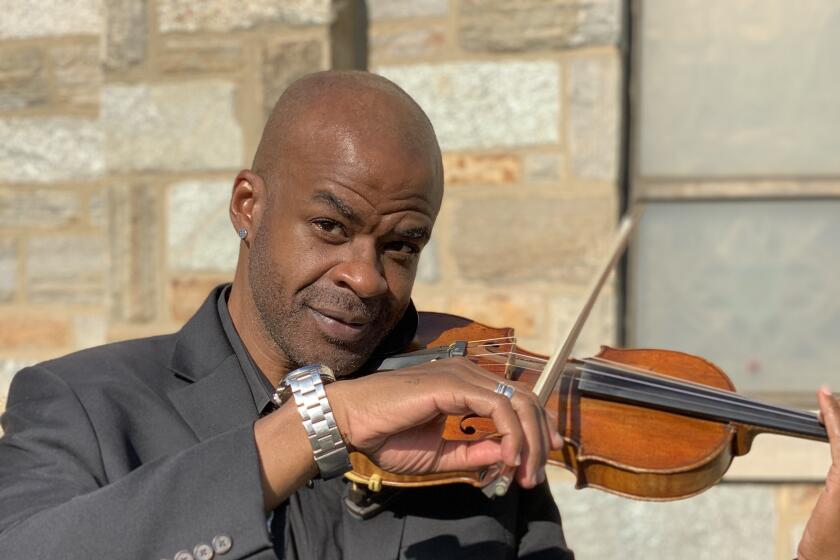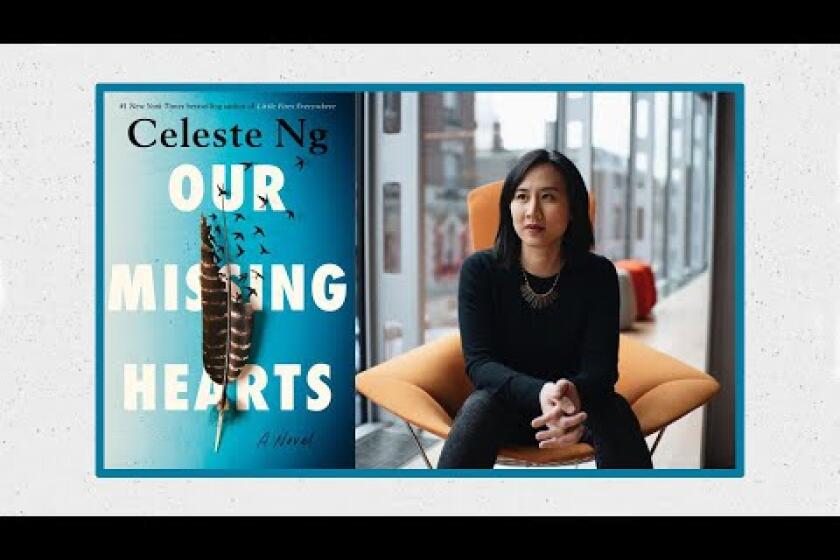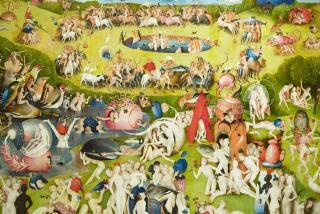How sci-fi writer Annalee Newitz turned to real-life scientists to build a (better) future
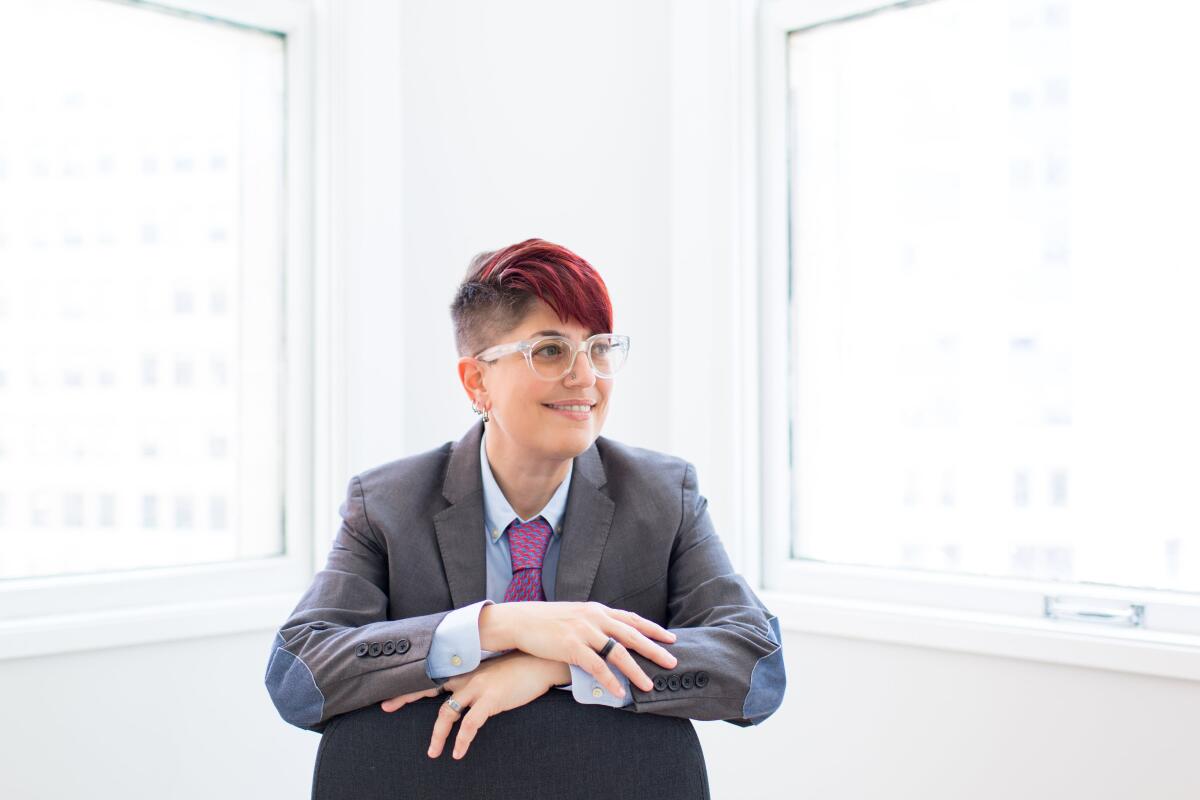
Novelist and science journalist Annalee Newitz brings ‘The Terraformers’ to the L.A. Times Book Club March 28.
- Share via
Annalee Newitz’s newest science-fiction novel, “The Terraformers,” is a sprawling saga set 60,000 years in the future.
But what’s most compelling is how Newitz redefines what it means to be a person. The novel’s characters include a flying moose named Whistle, a sentient passenger train and an alternative human subspecies that’s built a secret city underneath a volcano.
When Newitz set out to imagine the details of that exotic fantasy world, where a malevolent corporation seeks to remodel a planet into a better version of Earth, the first step was talking to actual scientists.
“I worked as a journalist for like a decade before I started writing fiction,” Newitz explains. “And my journalism was always focused on science and a lot of times on cutting-edge science, and it still is. So it’s definitely always kind of brushed up against speculative thinking.”
“I always start out by interviewing not just scientists, but people who are experts in the topics that I’ll be dealing with in the book.”
On March 28, Newitz joins the L.A. Times Book Club for a livestreamed conversation about “The Terraformers.”
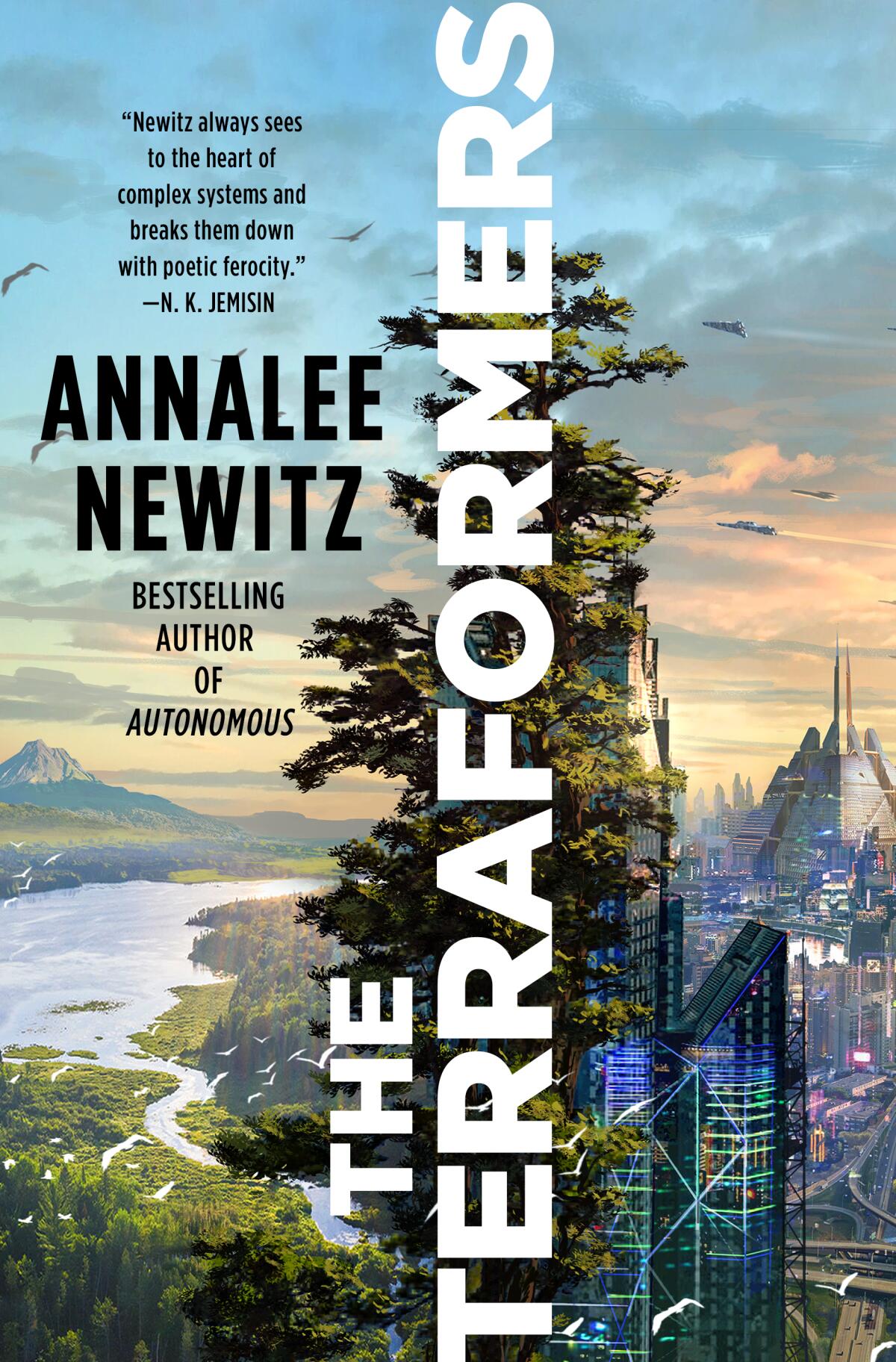
Newitz founded the science-fiction website io9 and later served as editor-in-chief at Gizmodo. The 53-year-old novelist, who grew up in Irvine and now lives in San Francisco, also writes nonfiction for publications such as New Scientist, Wired and Atlas Obscura.
The author, who uses the pronouns they/them, speaks in a dazzling torrent of words, and balances discourse on subjects such as robotics and earth science with self-deprecating quips.
Newitz developed a deep-research style while working on their first novel, “Autonomous,” which was published in 2017.
“I was like, ‘Oh, man, I really need to interview some roboticists now, because I have no idea what I’m doing, and I have a character who is a robot,’” they recall.
“In ‘The Terraformers,’ before I started writing, I wanted to understand what kind of a planet you would choose to do a terraforming project on, given that you’re in the future and you could just search around for planets. How would you start?
“When you pick a planet, do you try to make all the nice things from Earth be there?”
But what parts of Earth would you leave out? One thing that came up when Newitz talked to planetary scientists and geologists was plate tectonics, the movement of large portions of the Earth’s surface that builds mountains but also causes earthquakes and tsunamis. “I mean, the point is that earthquakes kind of suck for everybody, and of course you can get tsunamis even on the East Coast. So it was interesting to think about it from that angle.”
Additionally, “I have this gigantic river in the novel. I thought, ‘I have literally no idea how rivers work. I don’t know how they form,’” Newitz says. That led them to contact U.S. Geological Survey scientist P. Kyle House. Newitz asked House for suggestions on how characters would dam a river. “He’s like, ‘Have you heard of lava dams, where volcanic rocks and lava creates a dam and reroutes the river?’” Newitz recalls. “And I was like, ‘Of course, it makes sense that that exists. That is so badass. That is definitely going in the book.’”
Science journalist and sci-fi writer Annalee Newitz’s new novel, “The Terraformers,” brims with fascinating premises and the same old human conundrums.
Newitz got the idea for “The Terraformers” from a friend, poet Stephanie Burt. “I was agonizing about what I was going to write next, and she’s like, ‘You need to write a story about nation building. You know, what happens long after the revolution.’”
That notion appealed to Newitz, who also saw the chance to write a multigenerational epic. “I read a lot of those as a kid, and I always enjoyed that feeling of like, ‘Oh, now we get to see what happens much later.’ I wanted to experiment with that format.”
In writing the novel, Newitz compiled a massive document — essentially a mini-encyclopedia for the planet Sask-E — to keep the details straight. One of the keys to writing science fiction, Newitz says, is trying to create an internally consistent imaginary world. “I think it’s part of the pleasure for readers, too, because the more consistent the world is, the more you can immerse yourself in it, and escape from the dreadfully inconsistent world that we live in.”
Populating that epic with compelling characters was the next part of the evolution. And though “The Terraformers” is set on another planet in a distant future, Newitz still used the familiar technique of mining and repurposing bits and pieces of old memories.
Destry, the novel’s tough but empathetic environmental ranger, gets her name from the lead character in the movie “Destry Rides Again.” In the 1939 Hollywood western, Jimmy Stewart plays the son of a legendary gunfighter who dislikes firearms and tries to avoid carrying one, even though he’s a skilled marksman. It’s one of Newitz’s favorite films. “I’m all in on Jimmy Stewart,” the author says.
Bestselling author Brendan Slocumb joins the L.A. Times Book Club on Feb. 23 to discuss his debut, “The Violin Conspiracy.”
That fits, because in some ways, “The Terraformers” is more like a classic western than the bleak nightmare future portrayed in many science-fiction novels and films. “I grew up in the West, in California. So to me, all the great stories of a settlement are connected with westerns.” Newitz sees the novel as a “topia,” a mix of Utopia and dystopia, in which characters such as Destry and her companion, the intelligent and emotional moose Whistle, grapple with what the place they’re building should be.
Newitz describes ranger Destry and the Environmental Rescue Team as “anti-imperialist settlers.” They try to bargain with nature, rather than conquer it.
“Destry and Whistle are part of a group that isn’t just a belief system,” Newitz says. “They’re actively building that world. I love the idea of them roaming the boreal forest and just trying to make sure that people aren’t messing it up, and that the predator animals aren’t out of balance with the herbivores, and things like that. There’s a real connection between what they believe and what they get to do with their lives.”
The centuries-long scale of “The Terraformers” may remind some sci-fi aficionados of “A Canticle for Leibowitz,” Walter M. Miller Jr.’s 1959 novel about the revival of human civilization after a nuclear war. Newitz appreciates that classic, but says “it’s very much not my style, because it’s so misanthropic. ‘A Canticle for Leibowitz’ is about how we never get out of our problems.”
Instead, Newitz imagines a future world in which genetically engineered animal-human hybrids and intelligent machines stand up against injustice. Newitz drew inspiration from Indigenous people who protested against pipelines and other activist movements.
The human and humanlike characters in Newitz’s novel also have passionate experiences, sometimes despite their complicated artificial anatomy. “I felt like that freed me to be more honest about what love and eroticism really are.”
“Little Fires Everywhere” author Celeste Ng brings her new bestseller, “Our Missing Hearts,” to the L.A. Times Book Club.
Newitz already is working on a new novel that’s less sprawling in scope, in addition to continuing their prolific journalistic output.
But the novelist may not be done with Sask-E or a future 60,000 years down the road.
“I’m not a sequel person, so it’s hard to imagine writing any kind of sequel,” Newitz says. “But obviously, never say never. Maybe when I’m like 75, I’ll be like, ‘Dude, I finally figured it out. I’m gonna do this again.’”
If you go
What: Novelist Annalee Newitz joins the L.A. Times Book Club to discuss “The Terraformers” with Times columnist Carolina A. Miranda.
When: March 28 at 6 p.m. Pacific.
Where: Livestreaming online. Sign up on Eventbrite for watch links.
Join us: Sign up for the Book Club newsletter for the latest books, news and events.
More to Read
Sign up for our Book Club newsletter
Get the latest news, events and more from the Los Angeles Times Book Club, and help us get L.A. reading and talking.
You may occasionally receive promotional content from the Los Angeles Times.

